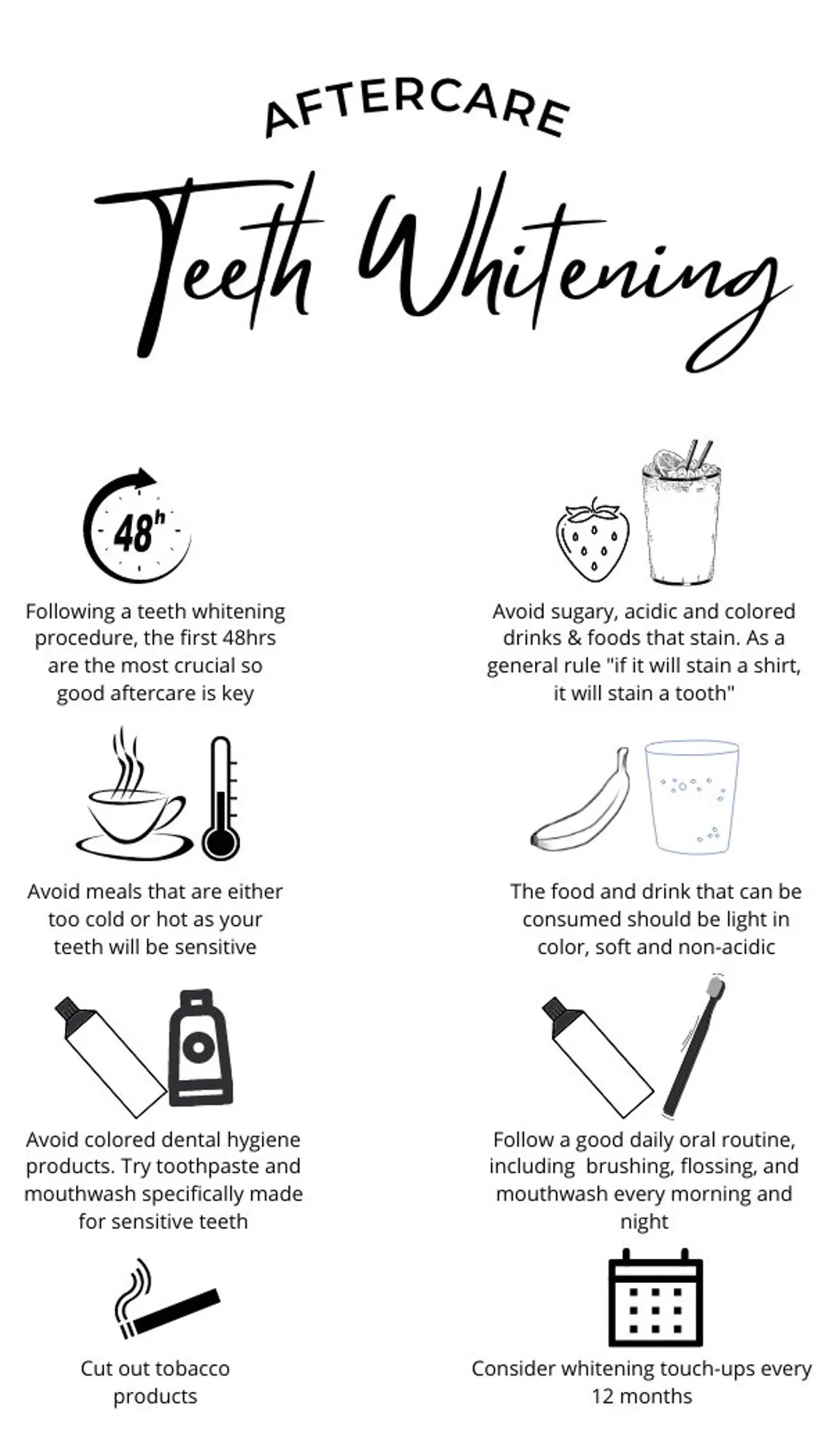The Importance of Teeth Whitening Aftercare
Teeth whitening is a popular cosmetic procedure, but its success hinges significantly on the aftercare you provide. Proper aftercare instructions are not merely suggestions; they are critical steps that ensure the longevity and effectiveness of your newly whitened smile. Neglecting these instructions can lead to disappointing results, including the rapid return of stains and increased tooth sensitivity. This is because the pores in your enamel are temporarily more susceptible to staining agents immediately after the procedure. Adhering to a strict aftercare regimen allows your teeth to remineralize and rehydrate, thus stabilizing the whitening effect and reducing the risk of adverse reactions. Think of it as an investment in your brighter smile – the better the care, the longer you’ll enjoy the results.
Why Aftercare Matters
Aftercare plays a pivotal role in several key areas. Firstly, it protects the teeth from staining. The whitening process opens up the pores in your enamel, making them vulnerable to color pigments from foods, drinks, and tobacco. Secondly, aftercare helps to reduce tooth sensitivity, a common side effect of teeth whitening. The products used during whitening can temporarily dehydrate the teeth, increasing sensitivity. Proper aftercare helps to rehydrate the teeth and restore their natural mineral balance. Thirdly, it maximizes the duration of the whitening effects, ensuring you enjoy your brighter smile for as long as possible. Lastly, it supports overall oral health, as many aftercare practices, like maintaining good oral hygiene, are beneficial for your teeth and gums.
Immediate Aftercare Actions
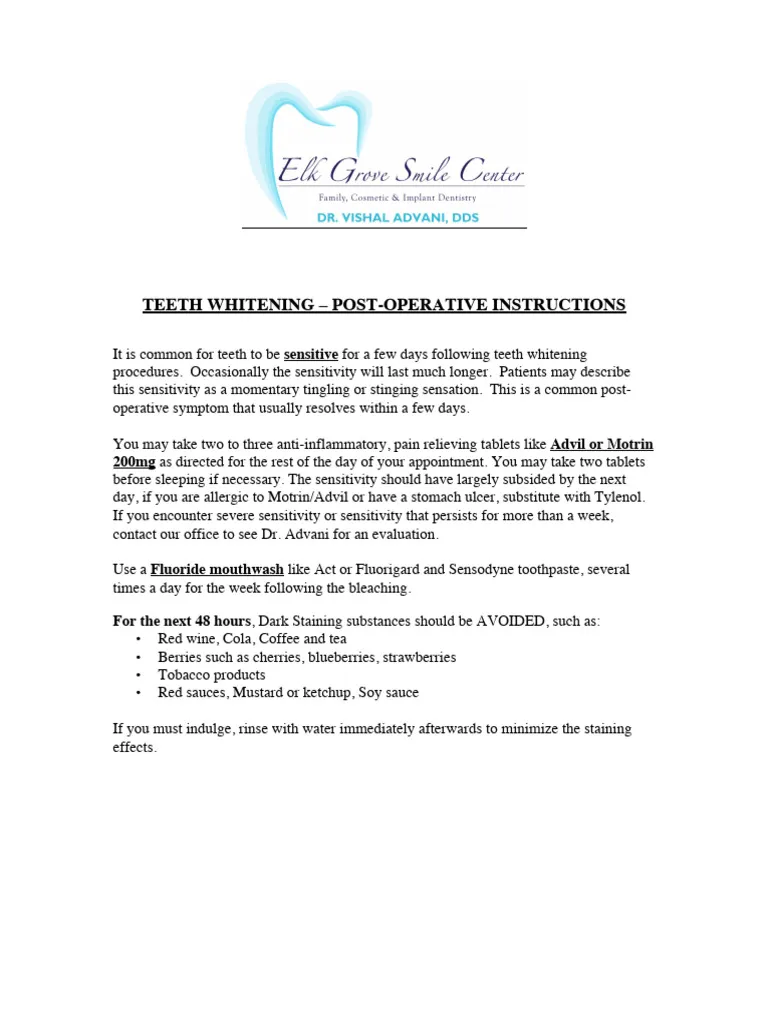
Immediately following your teeth whitening procedure, certain actions are crucial. The ‘white diet’ is the cornerstone of immediate aftercare. This involves consuming only white or colorless foods and drinks for the first 24-48 hours. You should also avoid smoking, as it is a major source of staining agents. Additionally, it is wise to use a soft-bristled toothbrush and gently brush your teeth to avoid any irritation to the gums or enamel. Drink plenty of water to keep your mouth hydrated, and avoid using any mouthwashes that contain strong colors or flavors, as these can interfere with the whitening process. By following these simple steps, you give your teeth the best chance to stabilize and maintain their new, brighter shade. (teeth-whitening-aftercare-1.webp)
Avoid Staining Foods and Drinks
One of the most critical aspects of teeth whitening aftercare is avoiding foods and drinks that can stain your teeth. These items contain strong pigments that can easily penetrate the pores of your enamel, especially in the initial days after the procedure. This means being mindful of your diet, and making informed choices about what you consume. Avoiding staining substances for the first 48 hours is usually the best practice, but extending this period can further protect your results. Being cautious with these items is a key part of preserving your bright smile and preventing premature discoloration.
Foods and Drinks to Avoid
Numerous foods and drinks are notorious for staining teeth. Coffee and tea, both black and green, are major culprits due to their dark pigments. Red wine contains tannins and chromogens that adhere to the enamel, causing stains. Dark-colored sodas and fruit juices, such as grape juice and cranberry juice, should also be avoided. Beets, berries (especially blueberries, blackberries, and raspberries), soy sauce, balsamic vinegar, and curries can also contribute to staining. When choosing what to eat, think about the color – if it would stain a white shirt, it’s best to avoid it during this crucial aftercare phase. (avoid-staining-foods.webp)
Foods You CAN Eat
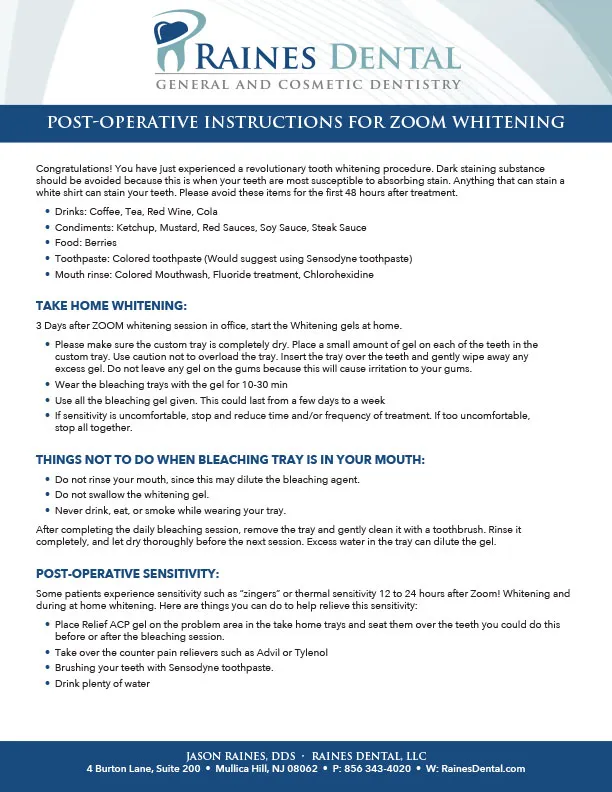
Fortunately, there are plenty of delicious and safe options to enjoy while maintaining your teeth whitening results. Focus on a ‘white diet’ that includes foods like white rice, pasta, plain yogurt, and cauliflower. Chicken and fish are excellent sources of protein and are generally safe to eat, provided they are not prepared with dark sauces or marinades. Bananas, peeled apples, and cooked potatoes are also good choices. When preparing meals, consider using white sauces or broths instead of those with strong colors. Drink plenty of water to stay hydrated and help rinse away any potential staining agents. By being mindful of your choices, you can satisfy your hunger while protecting your freshly whitened teeth.
Maintain Oral Hygiene
Proper oral hygiene is not just beneficial after teeth whitening; it’s essential for overall oral health. Regular brushing and flossing help remove plaque and food particles that can cause staining. This becomes even more important after a whitening procedure, as clean teeth are less likely to attract stains. You should brush your teeth at least twice a day, ideally after every meal, using a soft-bristled toothbrush. Flossing daily is equally important for removing plaque and debris from between your teeth and along the gumline, areas that a toothbrush may not reach. Regular dental check-ups and professional cleanings are also crucial for maintaining your bright smile and detecting any potential issues early on.
Gentle Brushing Techniques
It’s important to brush your teeth gently, especially after a teeth whitening treatment. Use a soft-bristled toothbrush to avoid irritating your gums and enamel, which can be more sensitive in the days following the procedure. Apply gentle pressure and use small, circular motions to clean each tooth thoroughly. Avoid aggressive scrubbing, which can damage your enamel over time. Brush for at least two minutes, ensuring you reach all surfaces of your teeth. Consider using a timer to ensure you brush for the recommended duration. Remember, a gentle touch is key to maintaining your oral health and the results of your teeth whitening. (gentle-brushing.webp)
Flossing with Care
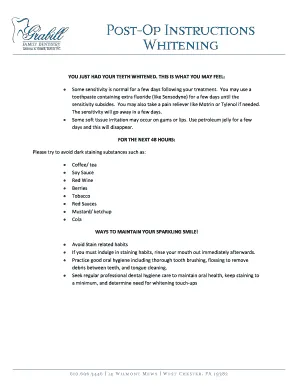
Flossing is a crucial part of your oral hygiene routine, and it’s important to floss with care, particularly after teeth whitening. Flossing removes plaque and food particles from between your teeth, areas where a toothbrush cannot reach. Use a gentle sawing motion to guide the floss between your teeth, being careful not to snap the floss aggressively against your gums, which can cause irritation or bleeding. Floss daily, preferably before brushing, to remove any debris that might be dislodged during brushing. This helps to keep your gums healthy and supports the longevity of your teeth whitening results. (flossing-teeth.webp)
Regular Dental Check-ups
Regular dental check-ups and professional cleanings are essential for maintaining your bright smile and overall oral health. Your dentist can assess the condition of your teeth and gums, identify any potential issues early on, and provide professional cleaning to remove plaque and tartar that you might miss at home. During a check-up, your dentist can also advise on the best oral hygiene practices for your specific needs, ensuring you maintain your teeth whitening results. Schedule check-ups every six months, or as recommended by your dentist, to keep your smile healthy and bright. (dental-checkups.webp)
Protect Your Results
Protecting your teeth whitening results involves a combination of careful dietary choices, diligent oral hygiene, and lifestyle adjustments. Avoiding staining foods and drinks is crucial in the initial days and weeks after the procedure. Maintaining a consistent oral hygiene routine, including brushing, flossing, and regular dental check-ups, will help keep your teeth bright and healthy. Be mindful of habits like smoking, which can quickly discolor your teeth. Additionally, using a whitening toothpaste can help maintain your results over time. Regular touch-up treatments, as recommended by your dentist, can also help to extend the life of your bright, white smile.
The Role of Whitening Toothpaste
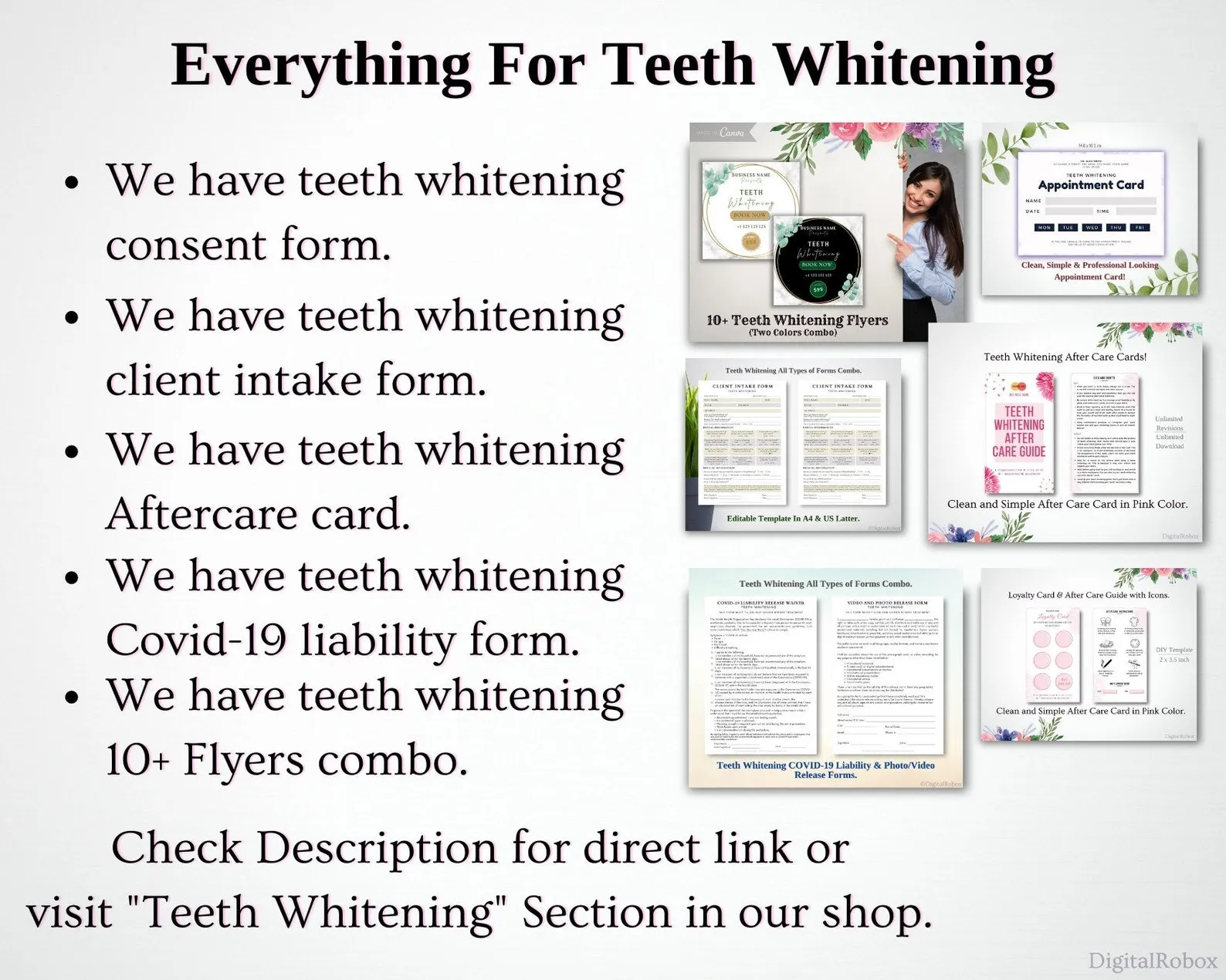
Whitening toothpaste can be a valuable tool in maintaining the results of your teeth whitening treatment. These toothpastes contain mild abrasives that help remove surface stains, and some may also contain chemicals that help to lighten the teeth. When choosing a whitening toothpaste, look for one that is approved by your dentist and does not contain harsh abrasives that could damage your enamel. Use whitening toothpaste as part of your regular oral hygiene routine, brushing twice a day for the recommended two minutes. Be aware that whitening toothpastes primarily address surface stains and are not a substitute for professional teeth whitening. (whitening-toothpaste.webp)
The Benefits of Fluoride
Fluoride plays an important role in oral health, especially after a teeth whitening procedure. It helps to remineralize the enamel, making your teeth stronger and more resistant to staining and decay. Using a fluoride toothpaste or mouthwash can help to protect your teeth. Your dentist may also recommend a professional fluoride treatment after teeth whitening to further strengthen your enamel. Fluoride is a key component in maintaining the health and appearance of your teeth. Following your dentist’s recommendations on fluoride use can help ensure the longevity of your teeth whitening results.
Long-Term Maintenance Strategies
Long-term maintenance is key to preserving your bright, white smile after teeth whitening. This involves a combination of strategies, including careful dietary choices, consistent oral hygiene, and occasional touch-up treatments. Be mindful of the foods and drinks you consume, limiting those known to cause staining, such as coffee, tea, and red wine. Maintain a regular oral hygiene routine, brushing at least twice a day, flossing daily, and visiting your dentist for check-ups and cleanings. Consider using a whitening toothpaste to help maintain your results. Regularly evaluate your habits and make necessary adjustments to keep your smile looking its best. Long-term maintenance is a commitment, but it’s worth it to enjoy a beautiful, confident smile for years to come.
Touch-up Treatments
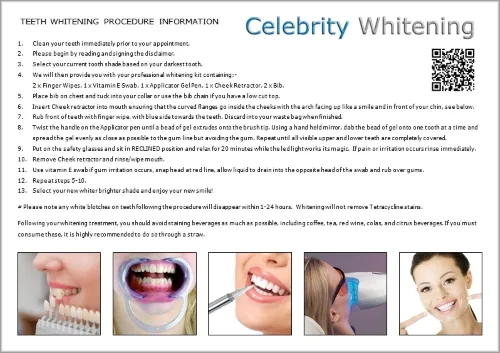
Touch-up treatments can be a helpful part of your long-term maintenance plan. Over time, teeth may gradually lose some of their brightness due to exposure to staining agents. Touch-up treatments, either at home or in your dentist’s office, can help to refresh your results and maintain your desired shade. The frequency of touch-up treatments depends on factors like your diet, lifestyle, and the initial whitening treatment. Discuss a touch-up schedule with your dentist to determine the best approach for your needs. Having a plan in place ensures that you can easily maintain your bright smile. (touch-up-treatments.webp)
Lifestyle Factors
Lifestyle factors can significantly impact the longevity of your teeth whitening results. Smoking is a major culprit, as it stains teeth and diminishes the effects of whitening. If you smoke, consider quitting to protect your investment in your smile. Regularly consuming staining foods and drinks, such as coffee, tea, and red wine, can also cause discoloration. Being mindful of your diet and limiting these items can help preserve your bright smile. Proper oral hygiene, including regular brushing and flossing, is also essential. By making positive lifestyle choices, you can help to maintain your results and enjoy a brighter, healthier smile for longer. (lifestyle-factors.webp)
FAQs About Teeth Whitening Aftercare
Many people have questions about teeth whitening aftercare. Understanding these common concerns can help you feel more confident and better prepared to maintain your results. This section addresses some of the most frequently asked questions about teeth whitening aftercare, providing clear and concise answers to help you navigate the process and maximize the benefits of your treatment.
How Long Do Results Last
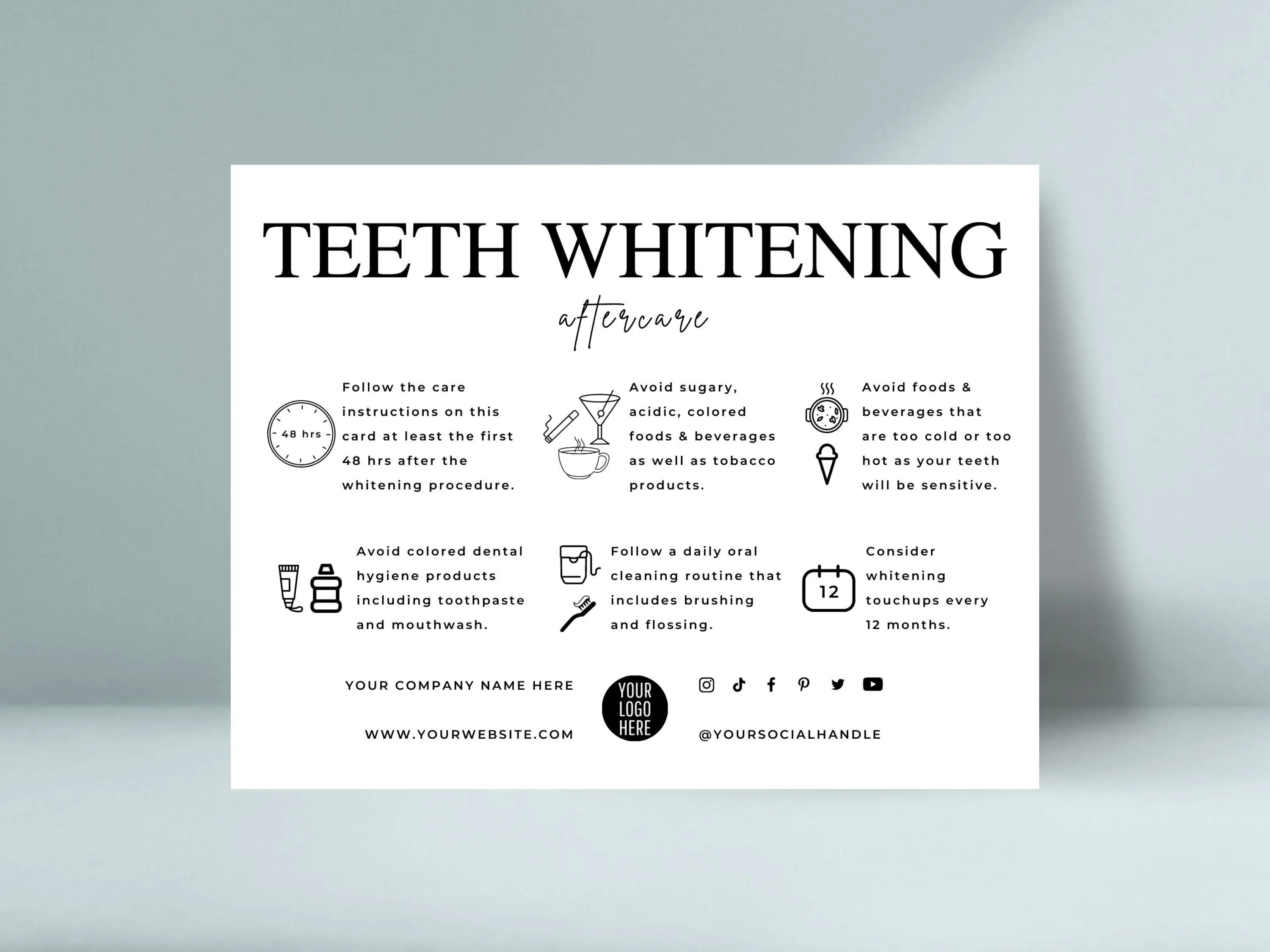
The duration of teeth whitening results varies from person to person, depending on several factors, including your lifestyle, diet, and oral hygiene habits. On average, results can last from six months to three years. Factors like avoiding staining foods and drinks, maintaining good oral hygiene, and undergoing touch-up treatments can extend the lifespan of your bright smile. Regular check-ups with your dentist are crucial for monitoring your results and determining the best approach for long-term maintenance. By adhering to aftercare instructions, you can enjoy a brighter smile for an extended period.
What if I Experience Sensitivity
Tooth sensitivity is a common side effect of teeth whitening. It typically occurs during and immediately after the procedure and usually subsides within a few days. If you experience sensitivity, there are several steps you can take to alleviate the discomfort. Use a toothpaste specifically designed for sensitive teeth. Avoid extremely hot or cold foods and drinks. You can also use a fluoride rinse, which helps to strengthen the enamel and reduce sensitivity. If sensitivity persists or worsens, contact your dentist for advice. They may recommend other treatments to help manage the discomfort and ensure your comfort.
Can I Smoke After Teeth Whitening
Smoking is strongly discouraged after teeth whitening. Tobacco products contain tar and nicotine, which are notorious for staining teeth and quickly reversing the whitening effect. Smoking can also contribute to other oral health issues, such as gum disease and increased risk of oral cancer. If you smoke, it is highly recommended to quit to protect your investment in teeth whitening and improve your overall oral and general health. Consult your dentist for resources and support to help you quit smoking and maintain your bright, healthy smile.
